Tamron 16-300mm review F/3.5-6.3 Di II VC PZD MACRO (Model B016)
Tamron 16-300mm F/3.5-6.3 Di II VC PZD MACRO (Model B016)
Tamron 16-300mm F/3.5-6.3 Di II VC PZD MACRO (Model B016)
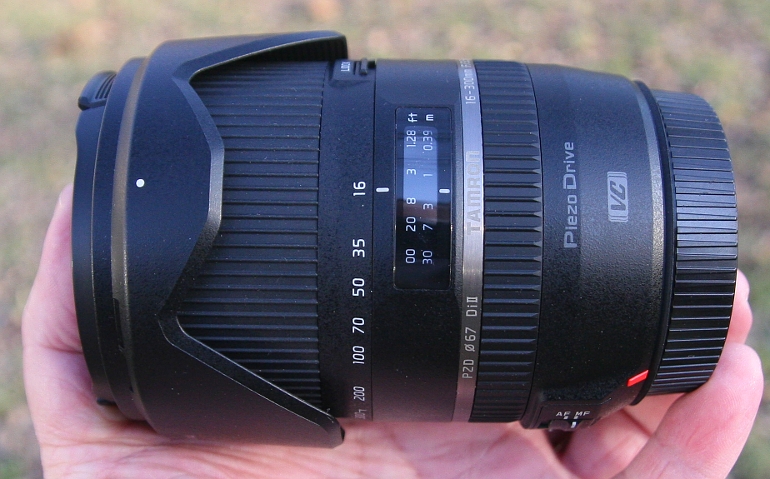
Introduction
What you can expect from such a lens ? These are my thoughts: worst at 300mm wide open, so-so corners everywhere, strong chromatic aberration, vignetting, adn distortion here and there. To make a superzoom comes with compromises. If you prefer lenses without distortion or chromatic aberattion, prime lenses are the best way to go, preferably with exotic Ed or Ud lens elements, or even flourite elements. Unfortunately the prime doesn’t do what this lens does. If we want longer or shorter focal length, we need to change lenses, or use more camera bodies. As I see Tamron makes a good job with this lens, soon I say why. This lens is small, cheap, has 16mm wide end and 300mm long end. Every body happy until now with this. Perhaps some will say I would prefer wider, other say longer, and we end up in an agreement of 10-1000mm in order to make everyone happy. No such a lens on the market yet. The problematic is the long end, to have an already dark f/6.3 aperture we need 1000/6.3=158.6 mm ?? Consider most cameras only autofocusing up to f/5.6. This doesn’t mean cameras won’t af with the Tamron 16-300mm or the 150-600mm lenses with f/6.3 maximum aperture, but it is interesting how it works.
| [do_widget Text] | [do_widget Text] |
Build quality
It is a plastic lens. The mount is metal, the filter thread is plastic. Everything is plastic. Otherwise no problem with the build. It helps to keep the weight of the lens low. There are three switches on the lens. A zoom lock, a switch between manual and autofocus and the stabilizer on-off switch. A zoom lock is located below the zoom ring, a little close to it, which is not the best place, when we rotate the ring it can be disturbing. It would be better to place more near to the mount. It is not a big problem according to my judgement, I just mention, to know about it. The stabilizer has one mode. The lens significantly extends if zoom towards longer focal length. It is a duo cam design with two extending sections.


Specifications
Item |
Tamron 16-300mm f/3.5-5.6 PZD |
Mount: |
Canon EF |
Filter size: |
67mm |
Lens elements / groups: |
16 elements / 12 groups |
Exotic Lens elements: |
|
Weight: |
539 g ( 18 oz. ) |
Dimensions: |
75 x 99.5 mm ( 2.95 x 3.92 ” ) |
Close focus distance: |
39 cm ( 15.3 “) |
Autofocus: |
PZD piezo drive |
Stabilizer: |
yes |
Switches: |
Manual focus autofocus, stabilizer on-off, zoom lock |
Lens Mount: |
Metal |
Format: |
Aps-C |
Magnification: |
0.33 x |
Reproduction ratio: |
1 : 3 |
Aperture blades: |
7 rounded |
Distance scale: |
yes |
Focal length: |
16 – 300mm |
Max Aperture: |
f/3.5 (wide end) f/6.3 (long end) |
Min Aperture: |
f/22 – f/40 |
Angle of view: |
82° – 12° – 5°20′ |
FTM (Manual focus override): |
yes |
Focus limiter: |
No |
Tripod mount ring: |
No |
Tilt / shift: |
No |
Optical quality
As I said in the introduction, don’t expect corner sharpness at f/3.5 at the wide end. If I would use this lens, I would stop down to f/8 at the wide end most of the time, in order to achieve sharp results. Surprisingly the long end can be quite good in the center even wide open. Stopping down increase sharpness, but not so much. The main feature of this lens is versatility. One lens all the time, or for more serious amateurs, “travel light” versatile lens. I’ve read such travelogues that exotic places in the far east monkey at one second, after some interesting spider and such. If we don’t have at least two camera bodies, hard to switch in seconds, to make the photo. No matter how good equipment we have, and we carry, if we cannot make the otherwise very interesting photo. For such occasions this 16-300mm lens is quite a good choice. We can respond to almost any opportunities quite quickly.

Canon 30D Tamron 16-300mm 73mm f/6.3 Somebody looks at this above pics may think look it is not really sharp..

But this is not the case click to see in big it is really sharp.
Sharpness at 300mm
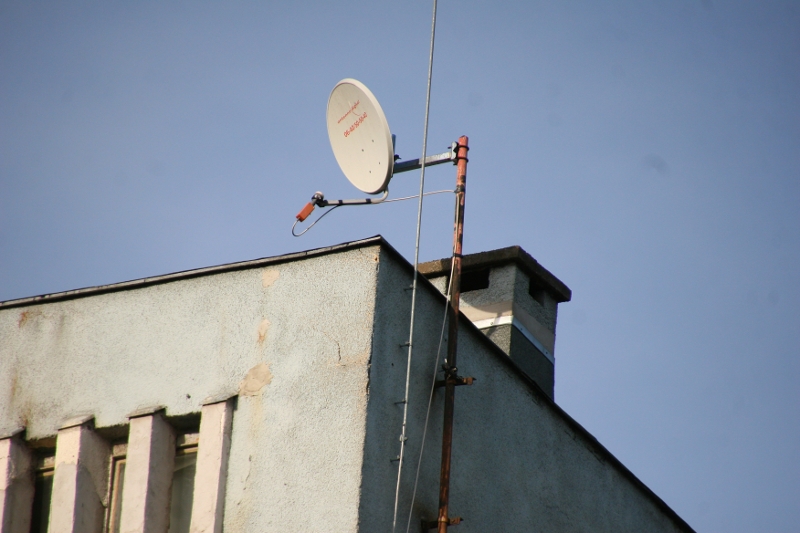
300mm f/6.3 original
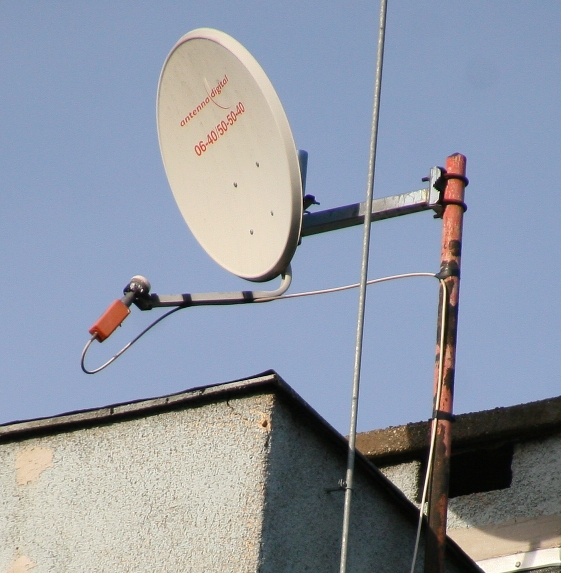
50% crop of the above image, the sharpness is very good for such a lens, even wide open, I was surprised about it, when first saw this I thought sharpness is similar to Canon 70-300 is lens sharpness, but perhaps the Canon little bit better. Don’t expect prime like results but perfectly usable the long end as well.

f/9 300mm 1/500s at screen size the pictures looks quite good even without sharpening, but if we want to crop more the results are not as good. To assume good for walkaround usage but not a wildlife type lens with lots of cropping potential.

It is hard to nail focus at 300mm. I did lots of shots but few of them are really sharp.
Flare
The lens has no problem with flare, you can shoot right in to the sun, but don’t look in the viewfinder because it can be dangerous for your eyesight. Tamron lens coatings are very good here, many Canon and Nikon lenses are worse in this regard.
Light fall off or vignetting
There is a vignetting (darker corners) at 300mm f/6.3 wide open is quite visible for the first look, perhaps at other focal length as well. It is tipical for such lenses, even the Canon 15-85 is very bad in this regard.
Bokeh
The Bokeh can be very nice, because of the long 300mm focal length. The lens has nice close focus distance as well allowing macro like shots, which is also very nice.


Autofocus
The lens has a new PZD drive. The PZD drive is not equal to ring-type USM motor in Canon lenses. The equivalent of this in Tamron line is the USD drive in many lenses for example 70-200mm zooms, or the new 90mm vc macro etc. But how good is the PZD drive? First it is silent, perhaps more silent than the USM drive in Canons, where you can here something here and there. In usage it is similar to the USM drive, but there are some differences. I have a Canon prime with an Ultrafast af, with excellent precision. No unsharp shot, very rarely if ever. For static subjects the PZD is quite reassuring, seems usually precise. With moving subjects, the situation is not the same. It is hard to judge which is the equipment part which is the lens. First the USM of my Canon prime is faster ( it is a very high end lens, with one of the best af ). The PZD is fast as well, but not as fast. It means if something moving, perhaps cannot catch the moment so precisely. So assume the lens has a very nice silent focusing, but not expect miracles. Some time perhaps would help to understand how is it working, and get used to it, in order to maximize the results. Certainly much better than an older micromotor, faster and silent. In speed perhaps similar to Canon’s Stm lenses. It is possible to make photos of flying birds, with nice accuracy, but hard to nail the focus. See samples for reference.
Switches
Zoom lock switch, Switch between manual focus and autofocus, and a switch between stabilizer on and off.
Price / performance ratio
First question do you need this lens? If you don’t need nothing to speak about. At wide angle there is better lenses out there, for telephoto as well. But in both cases you need two camera body or change lenses all the time. This is where the Tamron 16-300mm is very good, you can respond relatively quickly to different tasks. If you plan this as your only lens, the PZD drive is nice, silent, relatively quick but not up to Canon’s USM system regarding speed accuracy and reliability. So for me I have one wide angle lens (in reality two) and one tele. If I had more cash to invest I would upgrade my tele lens. But I understand the thing when I had only one camera I get crazy always changing lenses. So for people on a budget, aiming for versatility this can be a good choice. The zoom range is quite wide, the 16mm wide end is especially useful, the 1:3 magnification for macro is not bad either. The price of the Tamron is 629 USD. For this price it is not a terrific bargain, but not unrealistic either.
Alternatives / rivals
How is it compare to other lenses? I would not get the Sigma or Canon 18-200mm, over this lens. What is clear that the Tamron 16-300mm has a very good dollar/what you get ratio if you are on a budget, if you happy with the quality you get. I can suggest lenses like the Canon 17-55mm or the Tamron 17-50 f/2.8, but we only speak about wide angle coverage. These lenses are much brighter and sharper lenses. If I see budget from the same money no budget for a tele. What can be a better chice is the Canon 15-85mm lens.
Accessories
Petal shaped hood
Front lens cap
Back cap
Pros
Very useful focal length, the 16mm wide end is very nice
Extremely versatile
Light and relatively small
Not very expensive
Silent and relatively quick PZD drive
With proper settings ( proper apertures) capable of very good results, can make tack sharp images
Not bad even in 300mm f/6.3 in the center.
Cons
Compromises in optical quality compare to narrower range lenses
Plastic construction
Zoom lock is not the best position
Bottom line / recommendation
The Tamron 16-300mm is an interesting lens especially for those who want a “superzoom compact camera feeling” on a Dslr. The range is like the 18 x superzoom camera ( Panasonic fz 18, but little wider ) on a Dslr. Don’t expect miracles here as sharp corners wide open and such. Within it’s limitations it is quite a good lens, capable very nice images mostly outdoors. Little stopped down the lens is not bad at 16 or even at 300mm.
More picture samples:
Tamron 16-300m samples
________________________________________________________________________________________________________________________________
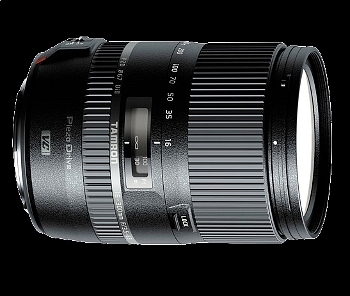
The Tamron 16-300mm is now available on BHphotovideo in Canon Nikon Sony A and Sony E-mounts.
Tamron 16-300 mm lens order link on B&H Photovideo ordering on BH website possible there possible to choose mount as well
Tamron 16-300mm F/3.5-6.3 Di II VC PZD MACRO (Model B016)
Tamron 16-300mm F/3.5-6.3 Di II VC PZD MACRO (Model B016)
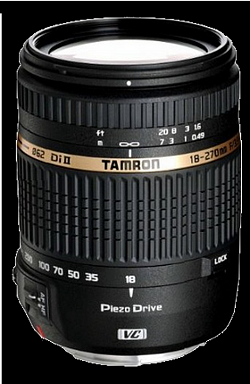
Introduction
Tamron announced the new Tamron 16-300mm F/3.5-6.3 Di II VC PZD MACRO (ModelB016) do it everything superzoom lens.
Available mounts
Will be available for Canon, Nikon, Sony mounts.
Why is this lens is so interesting?
Usually Tamron makes very competitive, excellent priced lenses. If I think about the Tamron 17-50mm or Tamron 90mm lenses among other lenses you get a lots of bang for your bucks. Some of this lenses has class-leading or near class-leading performance at a truly affordable price. For example Canon and Nikon gives similar quality for a multiple price. Even the new Tamron 150-600 is also a very interesting lens, not really compromising either in quality or price. The new Tamron 16-300mm is a do-it-everything lens: this lens designed for a purpose that the lens can stay on a cameras body almost all the time. I don’t like to change lenses everytime, if the new Tamron would be very good it would be a promising option. This is the reason I got a Nikon 16-85 because I find the 17-50 lenses little limiting. If you are after perfect quality, superzoom lenses usually won’t cut it: distortion on wide end, not super sharp corners, limited brigthness. But even for demanding shooters this lenses can be very interesting for travel or walkaround purposes. The new lens equipped with PZD drive and stabilizer as well, which expands the lens usability, on top of that the lens is quite small compare to what it does. The PZD drive is not equivalent of USM, USM is a moving type motor, while the PZD is standing type. The ring type USM equivalent is the USD drive at Tamron. The PZD(piezonic) drive is a new patent, but also quiet and reported to be quicker than the traditional micromotor. The PZD drive has an advantage over USD to make the lens physically smaller.
Features
-Incorporates Tamron’s piezo drive (silent, quick focusing)
-Vibration compensation – Tamron’s excellent image stabilization system
-0.39m minimum focusing distance
-Moisture resistant
-new cosmetics design
Specifications – Tamron 16-300mm
-Focal length:16-300mm – very useful range especially the 16mm is a good added value
-Max aperture:f/3.5-5.6
-Min aperture:f/22-40
-Number of diaphragm: 7 (circular)
-Lens formula: 16 optical elements /12groups
-Filter size:67mm
-Maximum diameter 75mm
-Length: 99.5mm (3.9 in)
-Weight:540g (19 oz)
-Minimal focus distance:0.39m, magnification 1:2.9
Specifications, appearance, functionality, etc. may be changed without prior notice.
Length and weight are based on figures for the Nikon-mount lens.
* Length is the distance between the front tip of the lens and the mount face.
Standard Accessories
-Petal shaped lens hood
Price – Tamron 16-300mm
Price of the new Tamron 16-300mm not known yet.(6th of February 2014). Update:629 dollar.
Availability – Tamron 16-300mm
Availability of the new Tamron 16-300mm is not known yet.(6th of February 2014) Update: Middle of May 2014.
Official website:
Tamron’s official announcement
Alternatives
Only the Nikon 18-300mm come to my mind which is similar than this Tamron 16 300mm, but the 2 extra mm on Tamron makes a real difference. I guess the price will also be much cheaper than the the price of the Nikon. There are many other lenses with less range like 18-85, 18-120, 18-140, 16-85, 18-200 lenses. The 300mm is quite longer than even the 200mm.